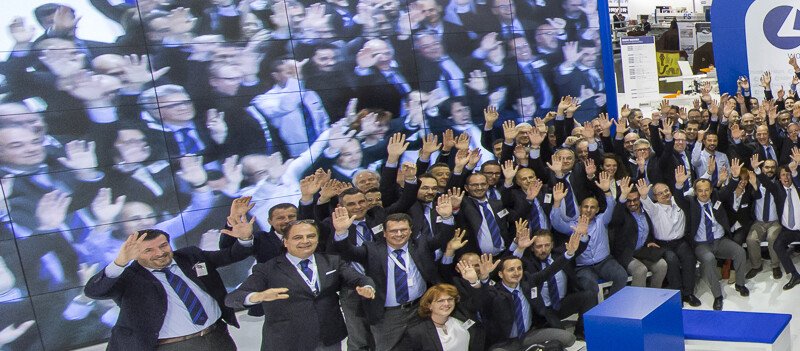
Alessandra Benedetti, SCM Group Digital Transformation and Business Remodeling Director, analyzes the key opportunities presented by the evolution of digital technologies and the Group's new priorities in its internal processes and customer relationship enhancement.
Today, artificial intelligence is at the heart of every industrial policy. So, how do you handle such a pervasive issue in a structured production context like the Scm Group?
For Alessandra Benedetti, Head of Digital Transformation and Business Remodeling at the Group, AI represents “a major breakpoint. It is a unique technology. AI can redefine not only processes but also the rationale for value creation. In this sense, we are not merely discussing a technical development, but also a cultural and strategic transformation.”
In the SCM Group, what levers is this transformation based on?
“Our change trajectory is progressing along two distinct lines. The first line focuses on enhancing customer relationships. Today, providing a top-notch product is no longer sufficient; it must be paired with advanced services that add value beyond the machine to the customer's value chain. The second line involves adopting digital technologies across all our internal processes to enable and accelerate change.”
How would you describe the complex process of introducing AI?
“Introducing AI involves addressing at least four distinct levels of transformation:
1. Individual – A change in mindset is necessary. From an outside-in perspective, we must unleash the entrepreneurial potential of everyone involved in the company’s ecosystem, both internal and external.
2. Team – We need to build agile, cross-functional teams that can make quick decisions and self-manage in uncertain contexts.
3. Cultural and organizational – We must facilitate collaboration among different organizational units, even if they function in diverse ways. This involves, on the one hand, traditional and more hierarchical units, and on the other, dynamic units focused on exploration. Utilizing AI for routine tasks frees up operational space, enabling us to support traditional organizational units in adopting more dynamic and exploratory approaches. In other words, by harnessing the technological advantages of AI, companies like SCM can grow by becoming ‘smaller’ in the sense of becoming more agile and innovative. The common bond is trust, and the interaction model must be based on the concept of a work agreement.
4. External context – We are living in a period of profound global reconfiguration. We also need to view AI in the context of geopolitical, economic, and social dynamics that are imposing new responsibilities on organisational leaders.
You have referred to this transformation as a task of “continuous weaving”. What do you mean by that?
“What I mean is that adopting AI is not merely a technological issue. It is a process that necessitates building new connections between data, people, organizational structures, and strategic vision. The Gartner Report indicates that most GenAI projects are abandoned after a successful proof of concept (POC), and often the issue is not the technology itself, but rather the absence of an environment that allows it to scale effectively.”
So, what is the right starting point?
It's always about the customer. Every AI initiative must originate from a case study that demonstrates clear use cases with well-defined economic objectives. ”
On a technical level, data management seems to be a critical factor.
“It is. AI is fundamentally a data problem. Data serves as the starting point and the key differentiator. However, in our organizations, data management often becomes fragmented, schematic, and transactional, failing to be user-centric. A paradigm shift is essential. Data should be treated as a strategic production resource that is centrally controlled yet made accessible in a distributed manner.”
What are your thoughts on skills and people?
We must move beyond a vision focused exclusively on efficiency and control. The Future of Jobs Report, as presented by the World Economic Forum, highlights skills such as analytical thinking, creativity, resilience, leadership multiplier, and the ability to listen and ask the right questions. It is time to build new leadership models that are more inclusive and enhance widespread potential.”
How does the role of partnerships change in this context?
“Companies can no longer operate as closed systems. Sharing data with other players in the customer’s factory — such as suppliers — enables the creation of integrated solutions by establishing a unique information flow. You can then apply domain-specific expertise to this flow to navigate the complexity of the physical world. However, this requires the ability to govern ecosystems, where a delicate balance exists between collaboration for value creation and competition for value appropriation. ”
In brief, can we still discuss industrial competitiveness without mentioning AI?
“Today, I don’t think so. Technology forces us to open up and rethink ourselves. We can’t face these challenges on our own. Only by working together, both within and outside the company, can we generate solid, sustainable, and inclusive economic growth. Digital transformation and Artificial Intelligence, in particular, present us with a strategic choice. It is not a question of adopting new tools, but instead of re-evaluating our assumptions about industrial competitiveness.
For manufacturing companies, today is a time for action. We don’t need to be perfect, but we do need to start with clarity, vision, and the capacity to orchestrate increasingly interdependent ecosystems.
We can’t just wait for the future. We need to build it. Together.
“Today, supplying a top-notch product, it's no longer enough. It needs to be accompanied by advanced services, that bring value beyond the machine to the customer's value chain.”